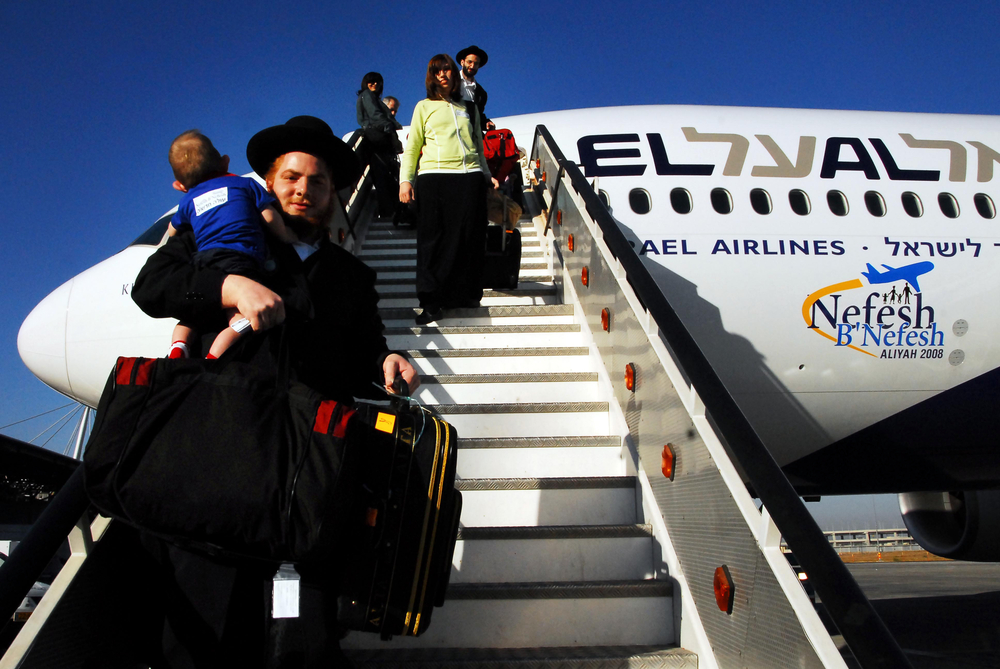Aliyah: The return of the Jews
Aliyah is a Jewish word that means “to go up” or “to ascend”. In our language it denotes the return of the Jewish people to Zion and Jerusalem. For centuries there was no homeland for the Jews, but the longing for Jerusalem remained. Meanwhile every year thousands of Jews decide to fulfil the Biblical promise and return to the Land of their forefathers.
The origin of the first aliyah
Throughout history there have always been small Jewish groups who returned to Jerusalem. Nevertheless, the first “real” aliyah took place not until the nineteenth century. Europe became increasingly unsafe for the Jewish population. Although some European countries had removed all antisemitic laws, the Jews still faced a lot of discrimination. The growing longing for their own country resulted in the first Jews leaving for Palestine in 1880. This was the beginning of the first aliyah. In those days there only lived 24,000 Jews in Israel. This number expanded into 650,000 Jews 75 years later.
Aliyah throughout the centuries
In 1879 Theodor Herzl and Max Nordau founded the World Zionist Organization. An organization that to this very day aims to support Jews in Israel and provides help to Jews who want to settle there. After the founding of the WZO the organization decided that there needed to be a home country for the Jews in Palestine. As a result of this, the Jewish population in Palestine increased ten to fifteen percent. This period is regarded as the second aliyah.
It wasn’t until after the First World War that the third aliyah started, that was a lot bigger than its two successors. The Ottoman Empire collapsed and the territory of Palestine came under the mandate of the United Kingdom. This was positive news for the Jewish population, since the British people had promised in the Balfour Declaration in 1917 that the Jews would get a national home. Between 1918 and 1940 a lot of Jews emigrated to the Promised Land and they brought the Land to prosperity. Many villages, kibbutzim and towns were founded in those days. Also, many Arabs migrated into the direction of Palestine in those days, because this area was much more prosperous than the surrounding countries.
The Second World war stopped the continuous stream of Jewish refugees for a couple of years, but after the war increasingly more Jews left for the British mandated territory of Palestine. After this fourth aliyah the Jewish population formed the majority in Palestine. In 1948 the State of Israel was founded, and in response five Arab countries attacked the newly founded country. Jewish minorities from the surrounding Arab countries did not feel safe anymore and massively fled to Israel. They had to abandon everything. The fifth aliyah was completed.
Aliyah today
Even today, thousands of Jews return to Israel every year. In the nineteenth century the Jews mainly came from Europe and Russia, today they come from countries all over the world. Unfortunately, it is not easy for everyone to build a life in Israel. Many people from Ethiopia struggle with the enormous difference in the standard of education and many elderly find it difficult to adjust themselves. The Israeli government has developed different programs to help with integration, so that integration is a lot easier. Programs like First Home in the Homeland supports young families. They are given housing for six months in a kibbutz and study Hebrew for five hours a day. The children attend school in the kibbutz. The kibbutz assists with finding jobs, takes care of administrative affairs and promotes social contacts with the kibbutz residents.




